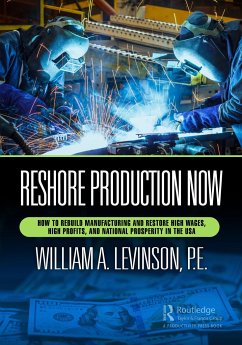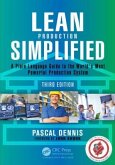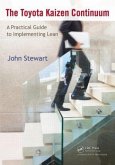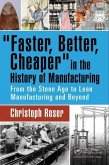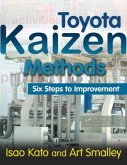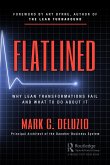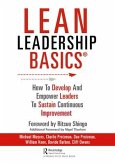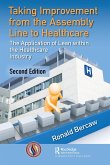This book addresses the vital importance of reshoring US manufacturing capability to ensure economic and military security and then discusses the proven methods that the United States used to gain manufacturing supremacy in the first place. The vital takeaway is: If the job can be made sufficiently productive, the per-unit labor cost ceases to be relevant which means a business can pay high wages, realize high profits, and deliver low prices simultaneously. The contest is then not between high wages and cheap labor, but between efficiency and inefficiency and, when automation is involved, machine against machine. Readers will be able to put these principles to work very quickly to achieve tangible results.
The relatively low Federal minimum wage has meanwhile become a major issue, but inflation skyrocketed in the second quarter of 2022 when higher wages, and higher demand for goods and services, were not matched with higher productivity. The book addresses the relationship between the money supply and the velocity of money to prices, wages, and productivity.
A manufacturing resurgence in the United States will not only increase our standard of living enormously but generate taxable economic activity that will help pay down rather than increase the Federal debt. Higher productivity also delivers a greater supply of goods to accompany higher wages, and thus works against inflation. This can prevent looming recessions and disruptions.
The relatively low Federal minimum wage has meanwhile become a major issue, but inflation skyrocketed in the second quarter of 2022 when higher wages, and higher demand for goods and services, were not matched with higher productivity. The book addresses the relationship between the money supply and the velocity of money to prices, wages, and productivity.
A manufacturing resurgence in the United States will not only increase our standard of living enormously but generate taxable economic activity that will help pay down rather than increase the Federal debt. Higher productivity also delivers a greater supply of goods to accompany higher wages, and thus works against inflation. This can prevent looming recessions and disruptions.
This book is an incredibly comprehensive analysis of the factors that drive a successful manufacturing economy. Levinson provides insights from pre-historic times to the current competition with China. He understands the importance of companies sourcing based on Total Cost of Ownership (TCO) instead of wage rate or factory price. Our user data shows that about 30% of import from China would be reshored if companies followed this advice and did the math correctly.
-- Harry Moser, President, The Reshoring Initiative (reshorenow.org)
-- Harry Moser, President, The Reshoring Initiative (reshorenow.org)
This book is an incredibly comprehensive analysis of the factors that drive a successful manufacturing economy. Levinson provides insights from pre-historic times to the current competition with China. He understands the importance of companies sourcing based on Total Cost of Ownership (TCO) instead of wage rate or factory price. Our user data shows that about 30% of import from China would be reshored if companies followed this advice and did the math correctly.
-- Harry Moser, President, The Reshoring Initiative (reshorenow.org)
-- Harry Moser, President, The Reshoring Initiative (reshorenow.org)

